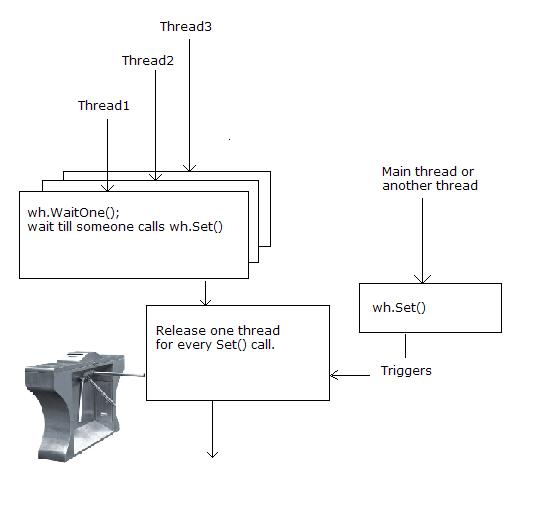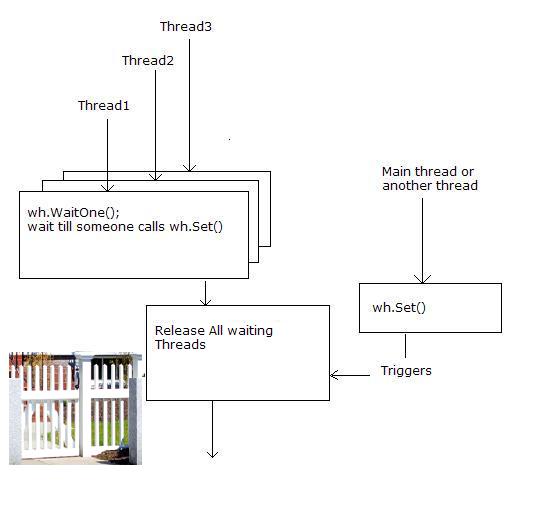Process and Threads
A process is a collection of virtual memory space, code, data, and system resources. A thread is code that is to be serially executed within a process.
Process always has at least one thread of execution, known as the primary thread. A process can have multiple threads in addition to the primary thread.
Threads vs. Processes
Both threads and processes and they are time sliced with other threads and processes. The key differences are
1. All threads within a single application are logically contained within a process.
2. Processes are fully isolated from each other but threads share the heap memory with other threads running in the same process\application.
Foreground and Background Threads
1. Foreground threads keep the application alive. But background threads do not keep the application alive on their own. They terminate immediately once all foreground threads have ended.
2. By default threads are foreground threads. Thread can be set as background thread. (thread.IsBackground = true; )
Deadlock Condition
A deadlock occurs when each thread is waiting for the other to do something A race condition occurs when one thread finishes before another on which it depends, causing the former to use a bogus value because the latter has not yet supplied a valid one.
Race Condition
A race condition exists when a thread modifies a resource to an invalid state, and then another thread attempts to access that resource and use it in the invalid state
Synchronizing objects
Lock
Locks are useful when only one thread at a time can be allowed to modify data or some other controlled resource.
Monitors
Monitors are Like the lock keyword, monitors prevent blocks of code from simultaneous execution by multiple threads. The Enter method allows one and only one thread to proceed into the following statements; all other threads are blocked until the executing thread calls Exit. This is just like using the lock keyword. In fact, the lock keyword is implemented with the Monitor class.
Mutex
A mutex is similar to a monitor; it prevents the simultaneous execution of a block of code by more than one thread at a time. In fact, the name "mutex" is a shortened form of the term "mutually exclusive." Unlike monitors, however, a mutex can be used to synchronize threads across processes.
Semaphore is same as Mutex but it ensures not more than a specified number of threads can access a resource, or section of code.
Double-check locking for Signleton classes.
More at Multithreaded Singleton: Double-check locking
public sealed class Singleton
{
private static volatile Singleton instance;
private static object syncRoot = new Object();
public static Singleton Instance {
get {
if (instance == null) {
lock (syncRoot) {
if (instance == null)
instance = new Singleton();
}
}
return instance;
}
}
}
Apartments
COM objects in the process as divided into groups called apartments. A COM object lives in exactly one apartment, in the sense that its methods can legally be directly called only by a thread that belongs to that apartment. Any other thread that wants to call the object must go through a proxy.
There are two types of apartments: single-threaded apartments, and multithreaded apartments.
1.Single-threaded Apartments—Single-threaded apartments consist of exactly one thread, so all COM objects that live in a single-threaded apartment can receive method calls only from the one thread that belongs to that apartment. All method calls to a COM object in a single-threaded apartment are synchronized with the windows message queue for the single-threaded apartment's thread. A process with a single thread of execution is simply a special case of this model.
2. Multithreaded Apartments—Multithreaded apartments consist of one or more threads, so all COM objects that live in an multithreaded apartment can receive method calls directly from any of the threads that belong to the multithreaded apartment. Threads in a multithreaded apartment use a model called free-threading. Calls to COM objects in a multithreaded apartment are synchronized by the objects themselves.

